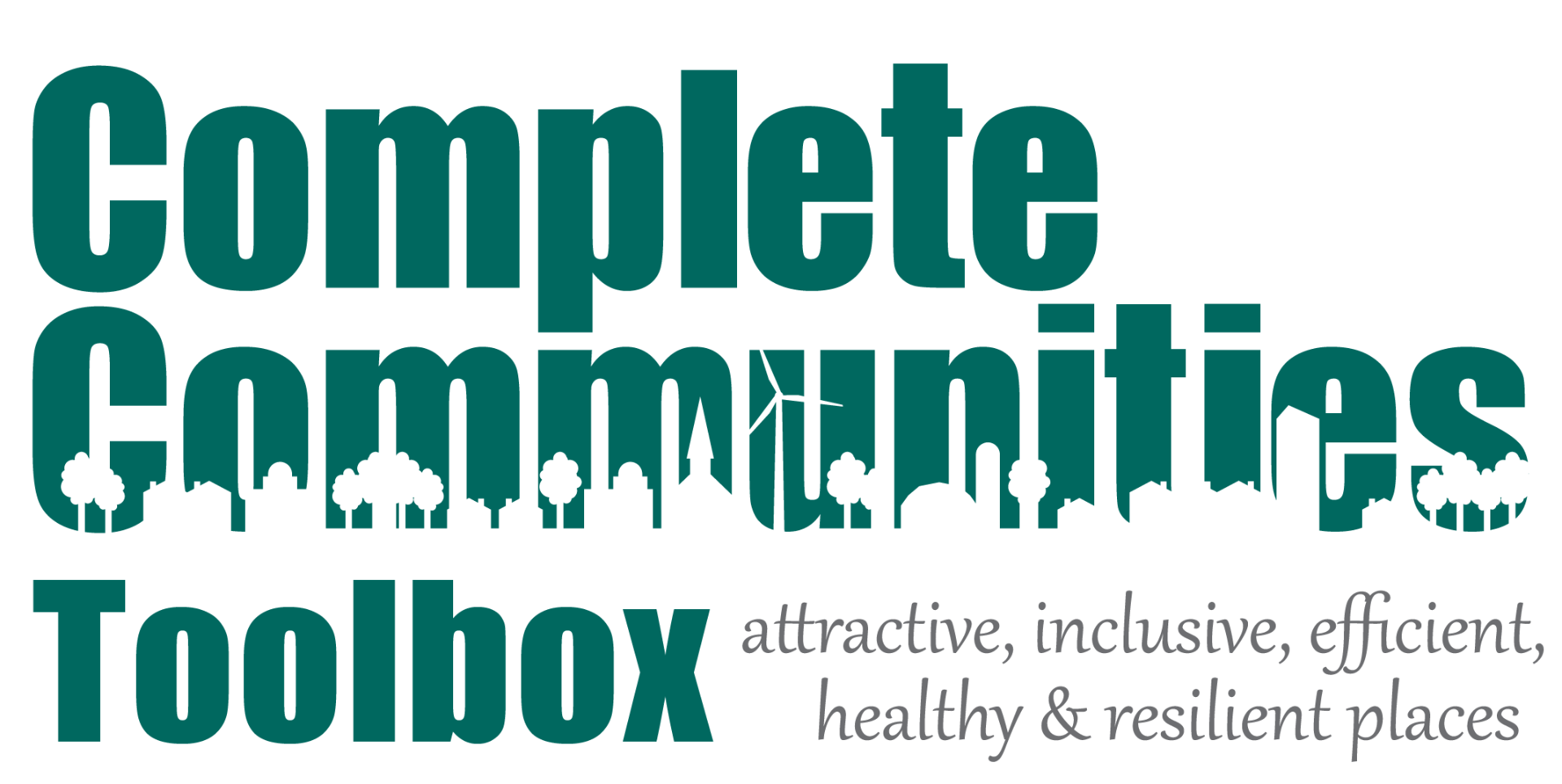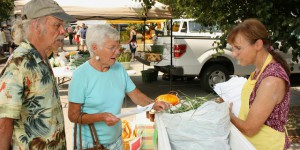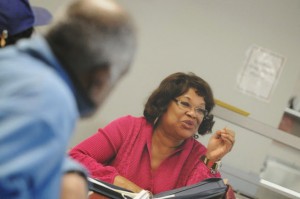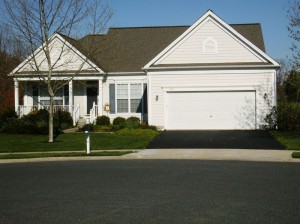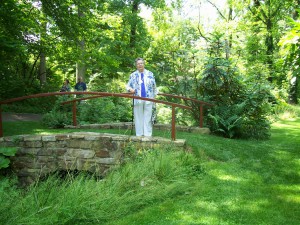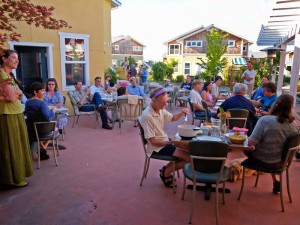What are Aging-Friendly Communities?
“Aging-friendly” communities are communities that provide affordable, accessible housing, multiple modes of transportation, access to community services, and opportunities for engagement for all residents, regardless of age or ability.
mnExamples of features found in aging-friendly communities include crosswalks that allow pedestrians adequate time to cross the street, buildings with no-step entry, homes with one-level living, bike paths, public transportation, wider sidewalks, and easy access to medical care, shopping, and recreation. These and other features ensure that residents of all ages and abilities can meet their physical, material, and emotional needs while remaining in their communities and maintaining independence.
An Aging Population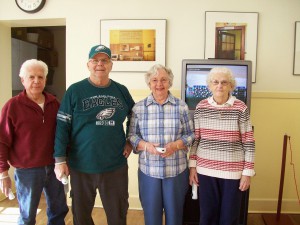
The growing need for such communities reflects the changing demographics of the country. Currently, one in eight Americans is 65 or older, and that proportion is expected to increase to one in five within the next 25 years. Moreover, a brief published by the U.S. Census Bureau reports that the 65 and over population grew faster than the general population between 2000 and 2010, at a rate of 15.1 percent compared to 9.7 percent.
Delaware is no exception to this trend. In fact, the percentage of the population that is 65 or older is even higher in Delaware than in the nation as a whole, at 15.3 percent compared to 13.7 percent. In addition, the Delaware Population Consortium projections show that the state’s population of residents ages 65 and over will increase by 104,000 people, or 80 percent, from 2010 to 2030.
Desire to Age in Community
 According to the AARP Public Policy Institute 89 percent of Americans age 50 and over want to remain in their homes as long as possible. Similarly, The Road Ahead: AARP Survey on Community Services in Delaware found that 85% of Delawareans age 65 or older believe it is “very important” or “extremely important” to remain in their home as long as possible.
According to the AARP Public Policy Institute 89 percent of Americans age 50 and over want to remain in their homes as long as possible. Similarly, The Road Ahead: AARP Survey on Community Services in Delaware found that 85% of Delawareans age 65 or older believe it is “very important” or “extremely important” to remain in their home as long as possible.
Older Americans’ desire to remain in their homes is significant because it can impact overall health care spending. A 2009 study published in Health Affairs found that states that expand home and community based health services (as opposed to services found in nursing homes and other institutions) experience long-term cost savings. This finding highlights the importance of maintaining aging-friendly communities that allow residents to remain in their homes without sacrificing mobility and quality of life.
Topics in this section
- Challenges for Aging Adults
- Barriers to Aging in Community
- How Local Governments can Support the Desire to “Age in Community”
- Adapting Home Environments for Older Adults
- Vital Community Design Practices
- Aging-Friendly Community Models
- Resources
Related publications
- Policy Brief (2019): Planning for Age-Friendly Communities: An Assessment of Two Sussex County Communities
- Policy Brief (2017): Sussex County’s Growing Senior Population: Community Voices
- Policy Brief (2016): Quality of Life Indicators Related to Sussex County’s Growing Senior Population: Preliminary Needs Assessment and Environment Scan
- Policy Brief (2014): Aging in Community Opportunities for Delaware’s Senior Population: The Significance of Accessible Community Transportation Options
- Policy Brief (2014) Understanding Demographics, Profiles, and Quality of Life Determinants Related to Delaware’s Senior Population
Visual resources
GIS StoryMap on Aging-Friendly Environments
This GIS StoryMap showcases planning for aging-friendly communities as a tool to achieve a Healthy and Livable community that enables people to maintain a high quality of life and productivity and has affordable and appropriate housing, supportive community features and services, and adequate mobility options, which together facilitate personal independence and the engagement of residents in civic and social life. This story map highlights examples “the Village Model” and Accessory Dwelling Units in Delaware.
Challenges for Aging Adults
Aging adults face a number of challenges within their homes and communities.
Accessibility
One challenge is the accessibility of homes, most of which are not built to accommodate unique physical needs of older adults who may face mobility, cognitive, or perceptual limitations and challenges. Consider, for example, how traditional doorknobs can be difficult for people with arthritis to open, or how entryways with one or more steps can contribute to tripping and falling. Other common housing features that pose accessibility challenges for aging adults include: ill-placed electrical outlets and light switches; narrow doorways and hallways that prevent or restrict movement of persons with mobility devices; and slippery surfaces.
Fortunately, there is greater recognition of the need for Universal Design that incorporates accessible features designed for all users, regardless of age or ability level. Universal Design is different from federal Americans with Disability Act (ADA) that sets forth building and facility standards for accessible design to accommodate persons with disabilities. The Center for Universal Design has identified seven Principles of Universal Design to accommodate people with a range of abilities such as a no-step entrance that enables access by a person using a wheelchair, pushing a stroller, or rolling luggage.
Transportation and Community Mobility
According to an AARP report on Livable Communities Livable Communities, “transportation that connects individuals to the goods, services, and social opportunities of the community contributes to successful aging.” Transportation and mobility options are needed to accommodate older adults with disabilities, who do not drive, who live in areas where public transportation is unavailable or lacks routes that connect to desired destinations, and/or live in communities where the build environment is unsafe for walking.
Transportation is often difficult to come by for those who are aging-in-place in suburban communities that are automobile dependent, or who move to remotely located “active adult” and “independent living” residential communities. Two studies, Aging Americans: Stranded without Options and Aging in Place: Stuck without Options, document the crisis that America’s largest generation will face in terms of isolation, reduced quality of life, and possible economic hardship when they live in areas that require travel by car and where affordable travel options are lacking.
Living Environments
An additional challenge specific to “active adult, 55+, or retirement lifestyle” communities is social isolation. As Amy Levner of AARP reports, “…age-segregated retirement communities are not attractive to a majority today.” Rather than live in communities composed entirely of aging adults, seniors prefer to stay engaged in their communities and maintain their existing social ties. An AARP Public Policy Institute fact sheet on supportive housing describes options that allow older adults to live in a non-institutionalized settings. Supportive housing can provide a variety of on-site support services for older adults via affordable housing units, adult foster care homes, continuing care retirement communities (CCRCs), congregate housing in apartment complexes, and multigenerational and intergenerational communities that foster interaction and social connectivity. Services within these settings can range from light housekeeping, to group meals, to wellness monitoring.
Local governments can develop livable communities policies that address issues such as land use, housing and transportation, which are vital to developing communities that facilitate aging in place.
Health and Social Service Needs
According to an IPA health policy poster, about 40 percent of Delaware’s adults ages 65 and older have a disability. The need for caregiving for older adults by formal, professional caregivers or by family members— and the need for long-term care, health, social services and supports—will increase sharply during the next several decades, given the effects of chronic diseases on an aging population. According to a 2012 Delaware State Plan on Aging, Delaware’s long-term care expenditure patterns are indicative of an over-reliance on facility-based services. Currently in Delaware, about 87% of long-term care dollars are spent on facility-based services, as opposed to 66% for the nation as a whole. Several recent studies have pointed to the need for Delaware to strengthen and improve access to its system of home- and community-based, long-term care services and supports.
Barriers to Aging in Community
The AARP Public Policy Institute defines a “livable community” as one “that has affordable and appropriate housing, supportive community features and services, and adequate mobility options, which together facilitate personal independence and the engagement of residents in civic and social life.” In order to age-in-place, a community must be livable.
The necessary components to achieve this include housing, transportation and mobility, efficient land use, cooperation and communication among community stakeholders, public participation in the planning process, and leadership. Unfortunately, there are several barriers to each of these components.
To overcome barriers to housing, there is a need for
- Multigenerational planning and intergenerational planning. Communities need to discourage continued development of residential developments that are strictly designed for a single market segment like “starter homes” for first-time buyers, “move-up homes” for growing families, and “retirement communities” for those older than 55
- Different and affordable housing options such as accessory dwelling units, cohousing, villages, cottage-style homes, and community partnerships
- Homes that incorporate universal design features that are accommodate people of all ages and abilities
- Housing options that consider the need for homes that can accommodate people across their lifespan, provide for Visitability and Universal Design, and can support the growing trend toward multi-generational households
Barriers to transportation and mobility
- Transportation facilities that are auto-centric and lack multi-modal options for non-driving adults or non-car households
- Public transportation services that are limited, lack connectivity, or are nonexistent—particularly in suburban and rural areas
- Poorly maintained sidewalks, biking paths, and pedestrian facilities
- Lack of Complete Streets that specifically accommodate the needs and/or provide a range of transportation options that safely accommodate older adults
- Lack of compliance with Americans with Disabilities Act (ADA) guidelines
Barriers to efficient land use
- Sprawling development patterns that are auto-dependent, limited to single-uses, and lack connectivity to homes and community destinations
- Strict separation of residential, recreational, and commercial spaces, which makes it difficult to access necessary amenities and services of daily living, such as grocery stores
- Lack of community design features, policies that support community livability, or recreation programming
Barriers to cooperation and communication
- Lack of affordable access and connectivity to high-speed internet services
- Limited interagency communication
- Lack of cooperation among neighboring communities
- NIMBY (Not In My Backyard) attitudes that impede livable community efforts
Barriers to public engagement
- Planning processes that exclude older adults or their caregivers
- Lack of sufficient planning, policy adjustments, and coordinated approaches to the provision of supportive services that make it possible and cost-effective for older adults to age in community
- Disregard for smart growth planning approaches that account for expected population shifts
Barriers to leadership
- Lack of “political will” can thwart efforts to make communities more livable
Understanding these barriers helps point toward solutions, and overcoming these barriers makes a community more livable for all residents. Ensuring that older adults have the opportunity to engage in civic life is a key component to both understanding and addressing barriers to livability. Older adults are capable, have valuable life experience, and can provide meaningful contributions through volunteer opportunities. Many local governments recruit and actively engage older adults on boards, commissions, committees and in planning processes to make communities more livable and age friendly, as advocated by many organizations such as AARP.
How Local Governments Can Support the Desire to “Age in Community”
AARP advocates planning livable communities that are “great for people of all ages.” This organization encourages states and local governments to prepare for the rapid aging of the U.S. population. It offers an online resource guide and an Age-Friendly Communities Tool Kit, which provides a framework to guide, support, and evaluate, age-friendly initiatives in communities. There are a number of livability policies and practices that local governments can adopt to support the desire to “age in community.”
Community Plans
In Delaware, local governments are required to prepare Comprehensive Plans to plan for future land use and development. It is important that local governments plan in advance to help smooth a demographic transition to an aging community. Arlington, Va. has created an Elder Readiness Plan to support older adults as they “continue to contribute and remain valued members of the community as long as possible.” This plan, created by a task force comprising policy experts and community members, is a “blueprint” for a livable community that serves as a model for other communities. Howard County, Md. is preparing a Master Plan for the Aging Population. This comprehensive planning initiative will consider the types of services, programs, and facilities that will be needed to address the future needs of this segment of the County’s growing population.
Multigenerational Planning
Multigenerational planning is a comprehensive approach to community and economic development that enables people of all ages and abilities to remain active, stay engaged, and lead fulfilling lives. Cornell University’s Planning Across the Generations Project has published a Planning for Multigenerational Communities issue brief. It outlines how planners can successfully adopt multigenerational planning to expand choices for families, increase the independence of people of all ages, and create stronger communities.
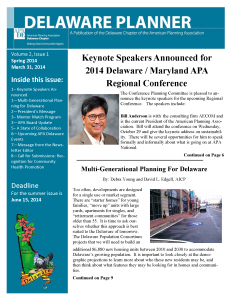 The Spring 2014 issue of the Delaware Planner, a publication of the Delaware chapter of the American Planning Association, features an article on Multigenerational Planning in Delaware. The article advocates the need for planners to understand the principles behind Universal Design and plan for compact, complete, and livable communities that are multigenerational and “great places for all.”
The Spring 2014 issue of the Delaware Planner, a publication of the Delaware chapter of the American Planning Association, features an article on Multigenerational Planning in Delaware. The article advocates the need for planners to understand the principles behind Universal Design and plan for compact, complete, and livable communities that are multigenerational and “great places for all.”
The American Planning Association (APA) provides resources on Aging and Livable Communities recently released an Aging in Community Policy Guide. APA advocates that communities adopt a multigenerational planning approach to ensure that the needs of all residents are met, including older adults that may be at risk of social isolation, failing health, and declining economic well-being. The guide encourages community planners to enhance their effectiveness in planning for the needs of all community members by integrating their work in housing, transportation, zoning, economic development, and health and human services.
In addition, APA recommends interspersing new housing types, such as accessory dwelling units, co-housing and intergenerational housing, within single-family home neighborhoods. Incentive programs should be considered to increase the number of homes built for basic access or are visitable to accommodate visitors of all ages and abilities. Incentives for mixed-income rental housing within infill areas should be encouraged. To preserve the existing housing stock, assistance should be available to older homeowners, who wish to age in community, for home modifications and rehabilitation to improve accessibility. Providing property tax relief and energy assistance programs to elderly homeowners also can improve housing affordability.
Land Use Plans and Policies
Land use plans and policies are an important component to successful aging in community. A local government comprehensive plan can provide a framework for growth and development that supports “lifecycle communities.”AARP defines these as “communities that are sufficiently flexible in physical infrastructure and service and social resources to accommodate the changing needs of all residents as they age.
Multigenerational planning practices and zoning ordinances that allow for a variety of housing types, market segments, and mixed uses can make communities more livable for people of all ages and abilities. Municipal zoning ordinances should allow for a diverse housing stock that provide a wide variety of housing types, sizes, densities, and costs. APA recommends that communities can adopt zoning ordinances, form-based codes, and policies that support mixed-use development and provide for residential living options that are in proximity to services for daily living. APA encourages planners to incorporate community design that improves the accessibility and mobility of people of all ages—including older adults that may have mobility challenges as they age. Communities should provide a regulatory framework that is sufficiently flexible to accommodate the changing social service, health care, daily living, and transportation needs of all residents as they age, lose their ability to drive, or become less mobile.
Transportation Policies
According to an article on Aging Places, without access to affordable travel options, older adults who no longer drive make 15 percent fewer trips to the doctor, 59 percent fewer trips to shop or eat out, and 65 percent fewer trips to visit friends and family than drivers of the same age. Land use and transportation planning can be better integrated to increase transportation options, enhance walkable destinations, and provide a mix of residential and commercial development that can enhance access to daily living services.
Dangerous by Design 2014: Delaware, a report from Smart Growth America’s National Complete Streets Coalition, states that road design, heavy traffic, high speeds is largely to blame for pedestrian fatalities. Between 2003 and 2012, 194 people were killed while walking in Delaware. This represents 15.9% of the 1,223 traffic-related fatalities in the state during this period. Delaware’s overall Pedestrian Danger Index (PDI) is 103.55, which places it 6th nationally. People age 65-plus make up 13.7 percent of the state’s population, but accounted for 16.2 percent of its pedestrian fatalities from 2003 to 2010.
The National Complete Streets Coalition urges local governments to adopt complete streets policies to ensure that “people of all ages and abilities are able to safely move along and across streets in a community, regardless of how they are traveling.” Complete streets have several components that work to reduce these barriers that aging populations face which reduce their ability to age safely in their communities. In addition, AARP’s report on Complete Streets for an Aging America suggests that communities consider the needs of older people in their multimodal street planning and adopt local Complete Streets policies. While over 80 states and local governments have adopted Complete Streets policies, less than one-third have implemented improvements to make transportation infrastructure (e.g., crosswalks, signalization, illuminated walkways, more visible signage, streetscaping amenities, connectivity) better meet the needs of older adults who often have visual or physical challenges. Delaware local governments should evaluate the extent to which their community vision, plans, policies, design standards, and facility maintenance practices are consistent with and support complete-streets principles. For more information, explore IPA’s Complete Streets section within its online Toolkit for a Healthy Delaware.
Housing and Community Design
Built environment barriers should be addressed to enhance mobility for people of all ages and abilities. The Centers for Disease Control and Prevention offers resources and information on ways to improve the built environment for healthy aging. It suggests the need to design communities that are both pedestrian- and transit-friendly. Housing needs to be convenient to community destinations and accessible by multiple modes of transportation. Transportation decisions affect land-use patterns, and land-use decisions impact transportation systems. Linking both transportation and land-use planning can foster aging in community and the ability for older adults to enjoy healthy lifestyles.
Access to Healthy Foods
Healthy foods must be accessible, and affordable to enhance the health of a community. For the millions of Americans living in food deserts a healthy diet is difficult to achieve. A policy brief by IPA suggests key solutions for addressing access to healthy foods. These include providing venues for farmers’ markets and supporting community and urban gardening. Providing locally grown, affordable produce improves public accessibility and encourages healthy eating habits. Local governments can also assist mobility-limited residents, who are unable to walk or drive to farmer’s market, by supporting in-home and community-based nutrition programs such as Meals on Wheels.
Adapting Home Environments for Older Adults
Universal Design
The use of Universal Design in housing construction or remodeling can increase the accessibility of residences. Universal design in homes provides features to accommodate the needs and maximize independence of people of all ages and abilities. The National Association of Home Builders (NAHB) provides online resources on design for independent living, an Aging-in-Place Remodeling Checklist, and information on Certified Aging-in-Place Specialists in Delaware.
Universal design is being promoted in Delaware. The Delaware Housing Coalition and the Housing Sub-Committee of the Governor’s Commission on Community-Based Alternatives for People with Disabilities issued a report on Community and Choice: Housing Needs for People with Disabilities in Delaware. Because 30 percent of Delaware’s population will be over 60 by 2040, and many older adults will face long-lasting mobility impairments, the study incorporated recommendations to address the need for universally designed homes. In addition, the Delaware Disabilities Council has developed a Delaware Universal Design website and has produced an excellent video that highlights the benefits of universal design. For more information, explore these Accessibility Design Standards and Guidelines.
Visitability
Visitable homes include features such as a zero-step entrance, wide interior doors and a half bathroom on the main floor. The campaign for visitability is also more widely accepted by home owners that do not yet have mobility restrictions but are willing to make adaptations to their homes in order to accommodate for others.
Use of Technology to Aid Independent Living
Use of technology is helping older adults lead healthier lives and maintain independence. An AARP Report states that high-speed internet access has become a vital tool for those who wish to remain in their homes as they age. Virtual Visits, using two-way video conferencing, allow aging populations to speak with specialists and general practitioners without leaving their homes, saving them time and travel costs. Chronic disease management has been aided through telehealth technology and home health monitoring. Monitoring and tracking daily measures of blood pressure or glucose levels can aid in the detection of irregularities. Medication optimization uses technology to manage prescriptions, dispensing, and tracking of medicine. New forms of assistive technologies are being used to help older adults with medical issues compensate for the loss of sensory, physical, and cognitive deficits. Finally, innovative “smart homes,” run using the internet, contain programmable sensors that can turn off the stove after a given period of time or even track when the medicine cabinet is opened, allowing people to remain safe in their homes as they age.
Vital Community Design Practices
Community Design Tools
The Community-Design Tools section of this toolbox provides strategies can help bridge the gap between sprawling streetscapes and aging friendly public environments. The Community-Design Tools section of this toolbox provides community design strategies that move that provide “an architecture of place.” Local governments can develop subdivision regulations and design standards to enhance various modes of travel, connectivity, bicycle and pedestrian circulation, and installation of sidewalks. Communities make take on the responsibility of creating their own design standards (while in compliance with DelDOT and federal standards) for creating unique identities that provide a sense of place (e.g., historical, geographical, and cultural characteristics).
Local governments can also develop jurisdiction-specific community design guidelines to implement a vision of r an accessible, livable, and multimodal community. Communities should be designed to support high-density, mixed-use development, near neighborhood services and transit, which allow the opportunity for residents to meet all of their basic needs within a community. Community design guidelines may be adopted to achieve a distinct urban or town center, a variety of connected transportation options, public-gathering spaces, traffic calming measures, universal/accessible design, and a well-connected, grid street pattern.
Walkable Communities
The built environment—the man-made physical structures and the infrastructure of communities—is an important, but often ignored, social determinant of health. Studies show that individuals who live in built environments that provide safe, walkable access to and from destinations are more likely to engage in physical activity on a regular basis. There are several benefits to walkability in communities, including socialization between community members and increased mobility independence. Walkable communities also provide the obvious benefits of an active lifestyle and reduced costs of alternate transportation that people on fixed incomes cannot afford. People of all ages can benefit from walkable communities. IPA has developed a Healthy Communities Walkability Assessment Tool that provides Delaware municipalities a way to evaluate the strengths and weaknesses of the town’s walkability.
Americans with Disabilities Act (ADA) Compliance
The Americans with Disabilities Act of 1990 is a civil rights law. It guarantees that people with disabilities have access to the “same opportunities as everyone else to participate in the mainstream of American life—to enjoy employment opportunities, to purchase goods and services, and to participate in State and local government programs and services.” ADA Title II applies to state and local government entities. Subtitle A of Title II protects individuals with disabilities from discrimination on the basis of disability in services, programs, and activities provided by public entities, including state and local governments. The U.S. Access Board has established ADA Accessibility Guidelines that focuses mainly on access to public facilities, buildings, and structures that are not located in the public right-of-way such as recreation facilities or a municipal council chamber. Public Rights-of-Way Guidance or PROWAG provides guidance to address conditions and constraints unique to public rights-of-way including sidewalks, curb ramps, and crosswalks that pose challenges to accessibility. The ADA Standards issued by the Department of Transportation (DOT) apply to facilities used by state and local governments to provide designated public transportation services, including accessible routes. While a Delaware local government many not be the provider of transit services, it may share responsibility for facilities that provide access to transportation such as bus stops and stations, bus boarding and alighting areas, and detectable warnings (e.g., truncated domes) on curb ramps. For more information about ADA, please visit the ADA webpage and the ADA section of this Toolbox.
Aging-Friendly Community Models
There has been a wave of initiatives across the country to support older Americans’ desire to stay in their own homes and communities as they age. Age-friendly communities support multigenerational homes and intergenerational living environments. Policies, services and structures, related to the physical and social environment of aging-friendly communities, are designed to help seniors “age actively.” These communities are specifically designed to help seniors live safely, remain healthy, and stay active and involved.
Framework to Create Aging-Friendly Communities
Grant Makers in Aging, in collaboration with the Pfizer Foundation, has published an online primer that offers a framework to create age-friendly communities. It suggests that an ideal framework for an aging-friendly community may feature the following aspects:
- Municipal and regional planning that provides opportunities for input of older adults
- Housing and other building design that is affordable, adaptive/accessible, and provides multigenerational options
- Social services and community/based programs that offer including nutrition programs, adult day programs, and caregiver support
- Transportation infrastructure and programs that provide multi-modal options, promote walkability, and provide accessible features for older adults
- Health promotion and community-supported services/programs that enhance the physical health and wellbeing of senior citizens
- Civic engagement opportunities, including intergenerational initiatives and volunteerism
- Efforts to promote access to information and new technology
National Models
Several national aging-friendly community models have emerged, which may be appropriate for
- Naturally Occurring Retirement Communities (NORCs)
- The Village Model
- Cohousing
- Cottage Communities
- Accessory Dwelling Units
- Community Partnerships
Naturally Occurring Retirement Communities (NORCs)
 According to the AARP, Naturally Occurring Retirement Communities (NORCs) are “communities that were built decades ago and originally served a mix of families and young households, where low turnover of households has led to the transformation of neighborhoods consisting largely of older residents who are aging in place.” A NORC is denoted by any geographically defined community where more than 40% of the population is aged 60 or above and live in their own homes.
According to the AARP, Naturally Occurring Retirement Communities (NORCs) are “communities that were built decades ago and originally served a mix of families and young households, where low turnover of households has led to the transformation of neighborhoods consisting largely of older residents who are aging in place.” A NORC is denoted by any geographically defined community where more than 40% of the population is aged 60 or above and live in their own homes.
Once these communities start to develop, organizations should be formed to provide services to these aging populations. Referred to as Supportive Service Programs (SSPs), these programs provide community-based intervention and assist residents obtain health and social service support, ancillary series like nutrition and fitness, partnerships with other service providers, and service coordination. SSPs may arrange for home repair, social activities, and volunteer support as well as discounts at local merchants. They also provide opportunities for residents to volunteer within the NORC itself.
Although providing services to all aging populations is a goal, it is important to limit the area that a specific NORC encompasses. In an U.S. News report on NORCs, a manager of a St. Louis NORC believes that “by limiting the area, the program retains a local, neighborhood focus. It allows for a deeper understanding of area residents, enables organizers to build a network of local merchants offering discounted services, and makes it easy to develop resident councils within individual neighborhoods and housing complexes”.
NORCs are a great way to provide services and assistance to aging community members and lower the costs associated with moving to traditional nursing homes, assisted living communities, and in-home health care. Most of the funding for NORCs comes from private or public sources such as grants. Members do pay fees, but they are relatively low, especially when compared with the typical costs of assisted living facilities. NORCs also allow residents to stay in their own homes and maintain their sense of independence. For more information, see the blueprint developed by a New York agency for creating, implementing and evaluating successful NORCs.
The Village Model
Villages are communities that are designed to support the process of aging in community. The Village-to-Village Network offers resources and a Toolkit for communities that wish to form a village. There are four distinguishing features of villages:
- Has physical boundaries within existing neighborhoods. This allows residents to remain in their communities and preserve existing social networks.
- Is considered to be a non-profit grassroots organization, and is usually incorporated as 501 (c) 3 nonprofit with a board of trustees comprising village residents. Some villages have paid staff, and all villages rely on volunteers, who typically perform basic services (such as yard work) and administrative tasks (such as organizing social events). Volunteers may be village residents or non-residents who wish to strengthen the community.
- Receives funding, in part, by annual membership dues. A 2012 survey conducted by the Rutgers School of Social Work found that the average cost of an individual membership for a village is $430, with a range of $25–$948. Many villages offer discounted membership dues to low-income seniors. Additionally, villages receive funding from grants, donations, and fundraisers.
- Establishes partnerships with local businesses and service providers in order to offer members affordable, trustworthy services. Villages offer a network of pre-screened and sometimes discounted preferred providers to perform labor intensive or technical services such as dial-a-ride transportation, in-home healthcare, and automotive repairs.
The greatest barriers to creating villages are recruiting and retaining members, and fundraising, which can be overcome by starting small and growing, having a reserve fund before becoming operational, and being open to changes in plans.
Beacon Hill Village in Boston, Mass. is one of the most successful villages, offering numerous services to its members, age 50 and over, including meal delivery, medication reminders and reduced-rate gym memberships. Another example, the Support Network at Penn National (SNaP) in Fayetteville, Pa. offers tax-deductible membership dues, daily personal check-in calls, educational programs, and volunteer-based transportation services, among other benefits.
The Brandywine Village Network in New Castle County, Delaware was the first in village established in the state. It offers its members social and wellness classes including yoga and Spanish, help with basic tasks such as grocery shopping and discounted service providers. The Greater Lewes Community Village in Sussex County was established as a nonprofit 501(c)(3) in 2014. It provides support, services, and programs that make it possible for the members to live independently and safely in their homes as they grow older, while remaining engaged in a variety of social, educational and cultural activities.
Cohousing Communities
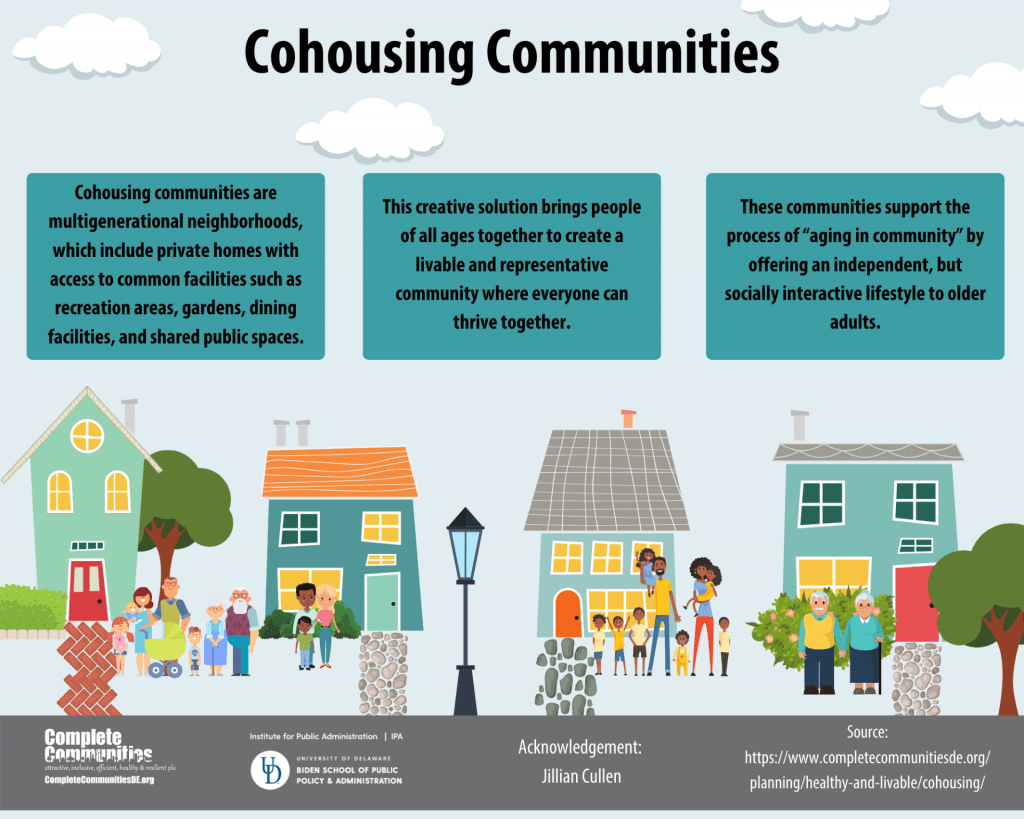
Cohousing communities are typically multigenerational neighborhoods, which include private homes with access to common facilities such as recreation areas, gardens, dining facilities, and shared public spaces. These communities support the process of “aging in community” by offering an independent, but socially interactive lifestyle to older adults. This creative solution brings people of all ages together to create a livable and representative community where people of all ages can thrive together. According to the Cohousing Association of the United States, “They bring together the value of private homes with the benefits of more sustainable living. That means common facilities and good connections with neighbors.”
Cohousing communities generally have no official governing or managerial body. Legally and financially, cohousing communities are organized as condos, co-ops and homeowners’ associations. Concerns are addressed by community consensus, which allows the older adults to voice their opinions about services and living conditions, such as accessible features within their homes.
The services offered in cohousing communities can range from in-home health care to more basic needs such as help with cleaning or cooking. Cohousing communities promote independence by allowing aging adults to remain in their homes, while still providing opportunities for social interaction and access to nearby services.
Unfortunately, this type of innovative housing solution may faces local government regulatory barriers. Zoning barriers include that restrict the number of units on a parcel, limit the relationships of or number of occupants per unit, impose mandatory parking spaces, and inhibit shared spaces. Other obstacles include financing of this type of development and cost. Cohousing units can be as expensive as single-family residential homes.
Mid-Atlantic Cohousing (MAC), a non-profit regional resource for individuals seeking cohousing and for existing and developing cohousing communities, offers a comprehensive list of regional cohousing resources. MAC also has a book/DVD set called Building Sustainable Neighborhoods for Today’s Housing Market with information to learn more about developing and marketing cohousing.
Cottage Communities
Cottage communities are defined as a grouping of small, single-family dwelling units clustered around a common area and developed with a master plan for the entire site. They are often developed in infill areas within existing suburban neighborhoods in order to encourage sustainable community development. Also called pocket neighborhoods, cottage communities provide connected backyards, create a pedestrian friendly environment and are designed to encourage community involvement and social interaction.
First introduced in 1996, “Third Street Cottages” in Langley, Wash., were made possible with the adoption of an innovative cottage-housing zoning code which enabled high-density housing on residential lots if houses were less than 1,000 square feet, oriented around a shared garden, and provided parking screened from street views. While suitable for all ages, cottage communities are attractive to the aging population. They are small and easy to maintain, energy efficient, and are suited for those with mobility limitations. Cottage communities are gaining popularity, especially around the Pacific Northwest, where cottage housing ordinances have been crafted to provide residents with housing options that improve affordability.
Benefits and Obstacles to Development
Cottage communities can be built in small clusters, within existing neighborhoods among single-family homes to maximize land use and minimize sprawl. Aging adults seeking to downsize from larger homes, can enjoy quality housing in a supportive community. Local regulations, however, can be a drawback for cottage communities. Many zoning codes regulate maximum densities and minimum-size requirement for houses and lots. Codes can be amended to allow for the development of sustainable and affordable cottage communities.
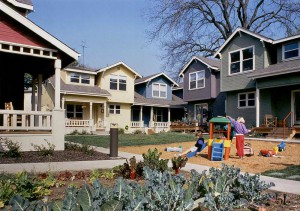
Successful Cottage Communities
In 2004, Port Townsend, Wash., adopted the Cottage Housing Development Design Standards within its zoning code to, “Encourage affordability, innovation and variety in housing design and site development while ensuring compatibility with existing neighborhoods, and to promote a variety of housing choices to meet the needs of a population diverse in age, income, household composition and individual needs.” The Port Townsend cottage housing code details the number of cottages per square foot that are allowed, as well as the minimum lot size for a community. An example of a successful cottage community in Port Townsend is Spring Valley Cottages, a green-built community, within walking distance to the town and service centers, with compact features, and a strong sense of community.
Inglenook, a cottage community in Carmel, Ind., features a series of six to ten cottages with front porches facing a common green space. Concord Riverwalk, a community of thirteen small homes in Concord, Mass., embodies the state’s sustainable development policies, which call for energy-efficient homes build near jobs, transit, and services.
Accessory Dwelling Units
An accessory dwelling unit (ADU), also known as an accessory apartment, second unit, or granny flat, is a type of living space located on a single family lot that is distinct from the main residential unit. ADUs are equipped with fully functional kitchens, a bathroom, living and sleeping spaces. There are three types of ADUs:
- Interior—ADUs are housed within the main dwelling and typically consist of a converted basement or attic.
- Attached—ADUs are built as additions to the main structure.
- Detached—ADUs are stand-alone structures.
Benefits of ADUs
Property owners may benefit from extra income generated by renting out an ADU. Homeowners and ADU occupants alike can benefit from companionship, assistance, and the security of living in close proximity. Furthermore, homeowners and ADU occupants may choose to create arrangements in which childcare, light maintenance, or other services are provided in exchange for reduced rent. These potential benefits are especially significant for older adults, as they can support aging in community.
Community benefits of ADUs include land conservation and an increase in (affordable) housing supply. Importantly, ADUs can be built to blend in with the aesthetic of a community. The cost of constructing an ADU can be lower than new construction because the land is already developed and the unit can be hooked up to existing utilities.
Regulatory Barriers to ADUs
Unfortunately, local zoning ordinances and growth limitations may prevent ADU construction. Places that have successfully promoted ADU construction, some even in the face of growth restrictions, include:
- An ADU Zoning matrix lists several west-coast cities have permissive codes that eliminate common barriers to ADUs
- Portland, Oreg., which has been noted for “strong land use control and growth management policies,” relaxed its ADU regulations in 1998 with “no significant negative issues.”
- The town of Wellfleet, Mass., has responded to an increased need for housing (especially among seniors), by approving 16 ADUs since 2006. The success of these units can be attributed in part to a loan program for developing affordable ADUs, and is all the more commendable in light of the fact that 70% of the land in the town is protected from development.
Delaware State Housing Authority (DHSA) Recommendations for ADU Regulations
The Delaware State Housing Authority has developed an excellent, online publication that highlights the ADUs as a practical option to promote housing affordability. It provides the following recommendations to local government policymakers that may be considering developing ADUs regulations:
- Conduct a housing needs assessment to determine the current need and demand for rental units in general, and ADUs
- Ensure that ADU conversions do not result in too many units that will surpass the community’s need
- Determine a good definition zoning code definition of the term ADUs
- Determine where ADUs will be permitted and the minimum lots’ size
- Decide whether ADUs can be regulated by either as a permitted use, with an administrative review, or as a conditional use, subject to public hearing
- Develop guidelines that govern the design and appearance of homes with ADUs to preserve the visual and single-family character of a neighborhood
- Determine if zoning code regulations and standards will allow ADUs to be attached, detached, or both
Community Partnerships
Community partnerships develop when individuals and organizations come together to work towards a common goal. This goal is usually beyond the mandate of any one of the participants individually and requires the partnership to be adequately addressed. With this in mind, each community partnership is unique and designed based around the needs of a specific community. Community partnerships exist throughout the nation between state and local governments, non-profit organizations, support service organizations, and agencies in the private sector. These partnerships tend to focus on the coordination of services such as housing assistance, transportation services, and general support service in a specific area. A distinct subset of these partnerships focuses solely on promoting aging in community and assisting with the unique demands for service of this population.
Community Partnerships for Older Adults
The Robert Wood Johnson Foundation (RWJF) has been a leader in community partnerships focused on aging populations for the past decade. RWJF created the Community Partnerships for Older Adults (CPFOA), an eight-year, $20 million dollar grant initiative to encourage community partnerships specifically benefiting older Americans. According to RWJF, the goal of this initiative is promote partnerships among local stakeholders to identify, prioritize, and implement local, community-based, solutions to many long-term care challenges that older adults face. The CPFOA communities have identified the following essential elements for a successful partnership:
- Direct involvement of older adults and non-traditional partners
- Community-developed and -supported strategic plan
- Partners commit resources to the strategic plan
- Shared leadership of the partnership and its work groups
- Neutral table to convene regular, open meetings
- Paid and/or dedicated staff to support the partnership
Delaware Senior Centers
In Delaware, the move toward the creation and development of more aging programs and partnerships in the community is part of an effort to correct a past over-reliance on more facility-based services, such as nursing homes. While it can cost over $70,000 to care for someone in a nursing home, while community-based programs that encourage aging in place cost about $15,000 a year.
Senior Centers, designated as community focal points through the Older Americans Act, are providing to provide vital to both the physical and mental health of senior citizens. Senior centers are places where older adults come together for services and activities that reflect their experience and skills, respond to their diverse needs and interests, enhance their dignity, support their independence, and encourage their involvement in and with the center and the community. Senior Center fitness, nutrition, social, and health and wellness programs/activities can prevent the onset of chronic diseases, illness, and depression.
Community Partnerships in Delaware
The State of Delaware has established a number of successful partnerships to foster aging in community. The Delaware Aging Network (DAN), a consortium of over 50 agencies across the state of Delaware, is committed to improving the quality of services older adults receive in the state. The emphasis of DAN is to help older adults live successfully in their own homes as they age with the help of community resources. DAN agencies and partners work with seniors to provide resources and case management services at local senior centers and other locations throughout the community. DAN agencies provide information about housing, health care, Medicare, Medicaid, in-home services, and transportation. Referrals are made to services to meet the personalized needs of each individual.
The Delaware Aging and Disability Resource Center, (ADRC) is a resource of the Division of Services for Aging and Adults with Physical Disabilities within the Delaware Department of Health and Social Services, is an access point for information and services for older persons and adults with physical disabilities. It publishes an online Guide to Services for Older Delawareans and Persons with Disabilities. Delaware’s Citizens Council on Aging, is a seven-member advisory board that is charged with developing and implementing all facets of aging-related policy.
Resources
University of Delaware Institute for Public Administration (IPA)
Partnership between UD IPA and the Delaware General Assembly
This program helps the Delaware General Assembly make grant-in-aid fund-allocation decisions. In the past, nearly $8 million has been allocated annually to approximately 45 senior centers located throughout the state. The funding formula, modeled and facilitated annually by IPA staff, considers geographic, demographic, and programmatic factors to provide a fair and efficient assessment for funding the state’s eligible senior centers. The primary goal of the funding formula is to encourage centers to better serve Delaware’s older adults. Project publications include:
- Policy Brief: Understanding Demographics, Profiles, and Quality of Life Determinants Related to Delaware’s Senior Population
- Policy Brief: Demographics and Profiles of Today’s Senior Population
- Issue Brief 1: Senior Centers and Age-Related Challenges
- Issue Brief 2: Leading Tomorrow’s Senior Centers
- Fact Sheet: The Impact of Senior Centers and Geriatric Healthcare Policy
- Fact Sheet: Demographics and Profiles of Delaware’s Elderly
- Issue Brief: Leading Today’s Senior Centers—Leadership Approaches and Best Practices of Delaware’s Multifaceted Senior Centers
- Poster: Preventing Disability
- Policy Forum Briefing: Optimizing Services for Delaware’s Seniors
University of Delaware IPA (2011). Complete Streets: A Guide for Delaware Local Governments.
University of Delaware IPA (2013). Transportation Services in Delaware for Persons with Disabilities and Senior Citizens.
University of Delaware IPA’s Senior Center Grant-in-Aid Project
The site provides resources to assist senior center directors and others interested in seeking information about the older adult population, such as senior center best practices, additional senior services and programs, demographic projections, aging fact sheets, health resources, and elderly assistance. This site also provides a list of University of Delaware resources related to the state’s aging population:
- Center for Disabilities Studies
- Clearinghouse on Abuse and Neglect of the Elderly
- UD Library Gerontology Links
Delaware Resources
Delaware Aging and Disability Resource Center
The Delaware Aging and Disability Resource Center (ADRC) is a resource of the Division of Services for Aging and Adults with Physical Disabilities within the Delaware Department of Health and Social Services. It is a one-stop access point for information and services for older persons and adults with physical disabilities throughout the State.
Delaware Aging Network
The Delaware Aging Network (DAN) is an aging-in-place initiative. Established in 2005, DAN is a consortium of over 50 agencies across the state of Delaware committed to improving the quality of services older adults receive in the state. Through initial funding from the Delaware Community Foundation, Astra Zeneca and the United Way of Delaware, DAN began to create coordinated services for seniors specifically in the areas of transportation, health care and housing. DAN now advocates for statewide policy changes that benefit the aging population and provides educational opportunities for aging service providers.
CARE Delaware
This resource provides information on assistance for caregivers. This includes needs assessment and care planning, organization of support groups and caregiver training, respite care, and community-based caregiver resource centers.
Guide to Services for Older Delawareans and Persons with Disabilities
A publication of Delaware’s Aging and Disability Resource Center, the guide contains a wealth of information about Delaware services and programs for older adults and persons with disabilities. The guide is organized into sections that provide information on a specific subject, such as a type of service or program. Most sections contain a short description of the service and a list of service providers along with their contact information.
Healthy for Life
Healthy for Life is Delaware’s Health Education and Disease Prevention Program developed specifically for older adults. The goal is to help people stay healthy and independent through good nutrition, physical activity, and healthy behaviors. A Healthy for Life handbook provides participants with useful information to help them understand and care for many common physical and mental health issues. Specifically, it helps participants to recognize symptoms; to provide self-care when appropriate; to know when to contact a health care professional; and to know how to be a wise consumer of health care. Copies of this handbook are available at no charge from the Division of Services for Aging and Adults with Physical Disabilities (DSAAPD).
National Resources
65+ in the United States: 2010 (2014)
This 2014 report from the U.S. Census Bureau provides the latest, comprehensive look at the nation’s population aged 65 and older, comprising 40.3 million in 2010.
AARP Public Policy Institute
The vast majority of older adults want to continue to live in their own homes or communities. This report examines state policies that are needed to help older adults age in place.
- Is This a Good Place to Live? Measuring Community Quality of Life for All Ages
- Planning Complete Streets for an Aging America
- What Is Livable? Community Preferences of Older Adults
- In Brief: Aging in Place
- Webcast: AARP Solutions Forum
Age-Friendly Communities: The Movement to Create Great Places to Grow Up and Grow Old in America (2013)
This publication introduces private philanthropies and local, state, and federal funders to a new, transformative way of thinking about aging and community development.
Aging in Place—A Toolkit for Local Governments
Created by the Atlanta Regional Commission (ARC), this toolkit is designed to provide guidance for local governments that are planning and preparing for their aging populations. The toolkit emphasizes specific techniques for coordinating housing and healthcare supports to help older adults remain in their homes and communities as they age. The framework of the toolkit is based on three critical issue areas—healthcare, environment, and planning and zoning—that are essential components for aging in place.
Aging in Place, Stuck Without Options (2011)
An analysis by the Center for Neighborhood Technology that explores the future numbers of seniors who will live in neighborhoods with poor access to transportation options other than driving.
American Planning Association
- Policy Guide: Aging in Community (2014)
- APA National Planning Conference, Atlanta 2014: Planning Communities for a Lifetime Facilitated Discussion
- AICP Symposium (2012): Aging in Place: Planning’s Role and Responsibilities
- APA, N4A and other partner organizations (2010-2011): Maturing of America II survey
- APA Briefing Paper: “Using Smart Growth and Universal Design to Link the Needs of Children and the Aging Population” (2011)
- Multigenerational Community Planning: Linking the Needs of Children and Older Adults (2010)
- U.S. Communities Struggle to Keep Up With Needs of Aging Population (2011)
Centers for Disease Control and Health Prevention
CDC’s Healthy Aging Website includes a Healthy Aging Data Portfolio that provides easy access to CDC data on key indicators of health and well-being, screenings and vaccinations, and mental health among older adults. Includes data from the The State of Aging and Health in America 2013 report, as well as other hard-copy reports from the Healthy Aging Program.
Creating a Livable Community: Engaging All Generations and Improving Quality of Life (2013)
A guide from Met Life designed to provide guidance for those at the local level to identify new ways to implement programs that enhance lives across all generations and create a livable and positive environment for community members.
Housing an Aging Population—Are We Prepared? (2012)
A report from the Center for Housing Policy explores the effects of the coming demographic change on the demand for housing and policies that could help communities respond to the dual challenges of providing older adults with affordable housing and adequate services.
Housing America’s Older Adults—Meeting the Needs of an Aging Population (2014)
A report by the Joint Center for Housing Studies of Harvard University that explores the urgency in planning for housing for older adults as the 50-and over population is projected to increase about 20 percent by 2030, to 132 million. The report website includes video coverage and resources such as infographics and an interactive map of the aging U.S. population.
Livable Communities for All Ages
This brochure provides research findings, resources and case studies on how all facets of the community can contribute to a more “older adult-friendly” environment.
Livable Community Indicators for Sustainable Aging in Place (2013)
A report from Met Life that identifies an initial list of indicators that can be measured using information readily available to local governments, providing a low-cost way for cities and towns to begin to examine the needs of their aging population.
Making the Right Moves: Promoting Smart Growth and Active Aging in Communities (2014)
An article from the Journal of Aging & Social Policy that describes an award program sponsored by the U.S. Environmental Protection Agency for excellence in smart growth and active aging.
Planning for Multigenerational Communities (2013)
An issue brief that is part of the Planning Across Generations Project in the Department of City and Regional Planning at Cornell University. The briefs in this series outline key points on how planners can successfully adopt multigenerational planning to expand choices for families, increase the independence of people of all ages, and create stronger communities.
Sustainable, Visitable, and Universal by Design
This resource looks more closely at the principles of universal design and visitability; the demographic and environmental challenges that can be addressed through their implementation; and steps that have been taken to promote sustainable and independent spaces and places. It also includes examples from the U.S. EPA Awards Program, Building Healthy Communities for Active Aging (BHCAA) that illustrate what can be done and has been done to promote independence and environmentally sound living places.

